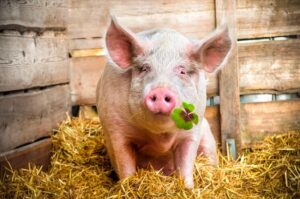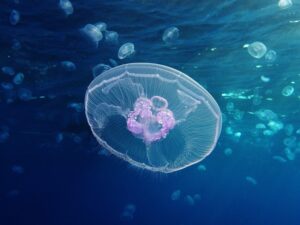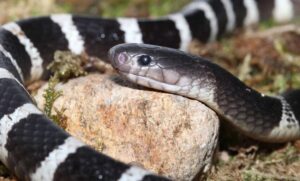The world of birds is incredibly rich and diverse in colors, sizes, and more. Now, KnowAllAnimals will introduce you to a list of the “Most Colorful Birds in the World” that will dazzle you if you ever see them in the wild. Let’s explore them now!
1. Most Colorful Birds in the World – Stunning Species to Discover
Brilliantly colored birds are often considered masterpieces of nature. From the vibrant red of the Scarlet Macaw to the rainbow plumage of the Lorikeet, each bird offers a unique beauty that leaves nature lovers in awe. In this section, we’ll explore the birds with the most prominent and impressive plumage in the world.
1.1. African Dwarf Kingfisher
- Kingdom: Animalia
- Phylum: Chordata
- Class: Aves
- Order: Coraciiformes
- Family: Alcedinidae
- Subfamily: Alcedininae
- Genus: Ispidina
- Species: I. lecontei
This bird could be considered the champion of “vibrancy.” Its dominant colors are red and yellow, with a dark blue back and yellow underparts. This species lives in the forests of South and Southeast Asia. It is also known as the Black-backed Kingfisher.
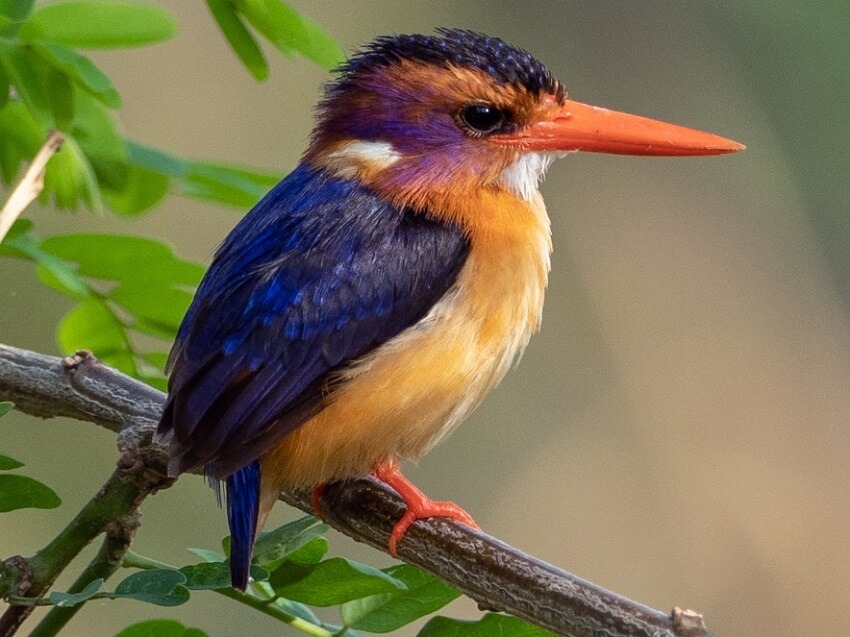
1.2. Crimson Sunbird
- Kingdom: Animalia
- Phylum: Chordata
- Class: Aves
- Order: Passeriformes
- Family: Nectariniidae
- Genus: Aethopyga
- Species: A. siparaja
The Crimson Sunbird lives in African countries like Burundi, the Congo, and some neighboring nations.
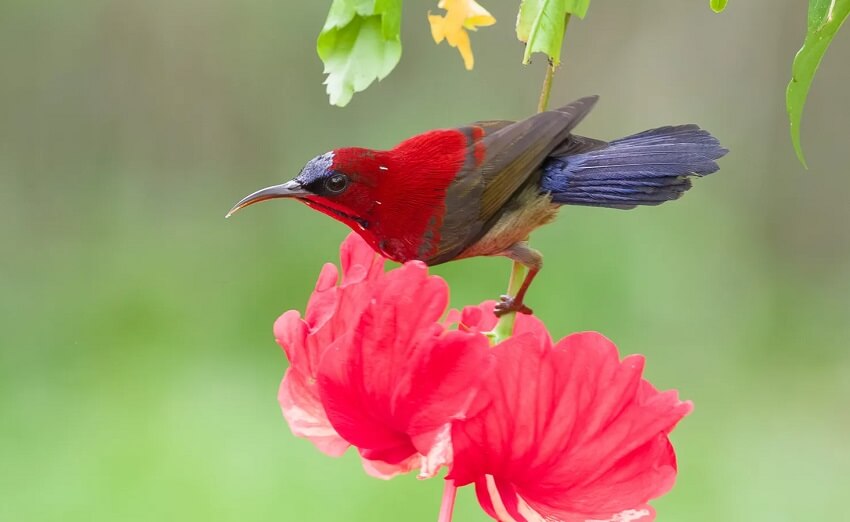
1.3. Brown-hooded Kingfisher
- Kingdom: Animalia
- Phylum: Chordata
- Class: Aves
- Order: Coraciiformes
- Family: Alcedinidae
- Subfamily: Halcyoninae
- Genus: Halcyon
- Species: H. albiventris
The Brown-hooded Kingfisher is the most brightly colored of all kingfisher species. This lovely bird lives in tropical and subtropical forests of Southeast Asia. Unfortunately, this species is experiencing habitat loss. (Photo: Calvin)
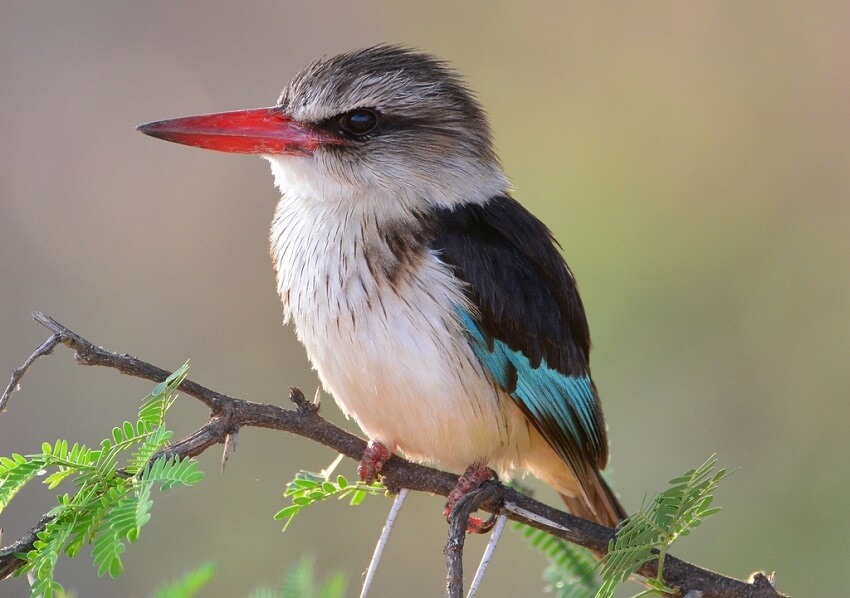
1.4. Gouldian Finch
- Kingdom: Animalia
- Phylum: Chordata
- Class: Aves
- Order: Passeriformes
- Family: Estrildidae
- Genus: Chloebia Reichenbach, 1862
- Species: C. gouldiae
The Gouldian Finch is one of the most beautiful birds in the world. They live in Australia and are currently listed as an endangered species with a population of approximately 2,500 individuals. Both male and female birds of this species have black, blue, yellow, and red colors. The male and female can be distinguished by their breast color; the female’s is a purplish lilac, while the male’s is purple.
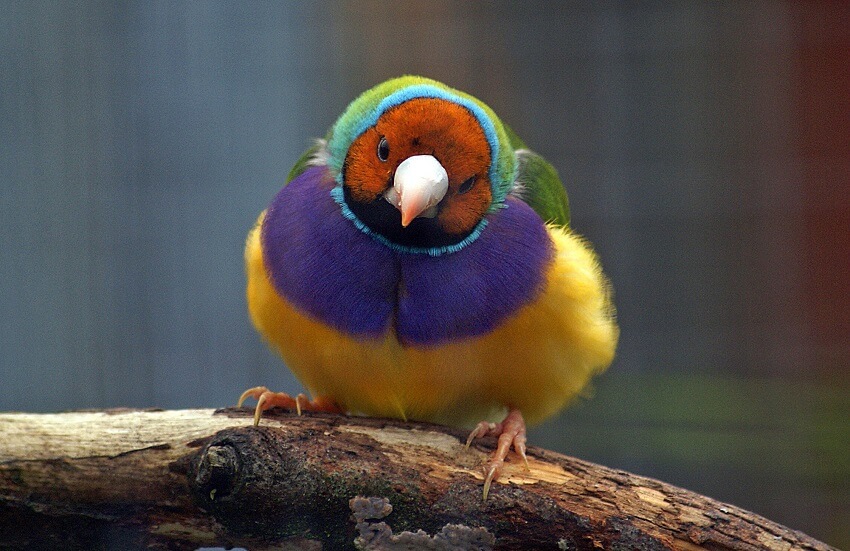
1.5. Yellow-crowned Gonolek
- Kingdom: Animalia
- Phylum: Chordata
- Class: Aves
- Order: Passeriformes
- Family: Malaconotidae
- Genus: Laniarius
- Species: L. barbarus
This bird belongs to the Laniarius family and is a carnivorous species. They primarily live in Africa, in shrublands and woodlands.
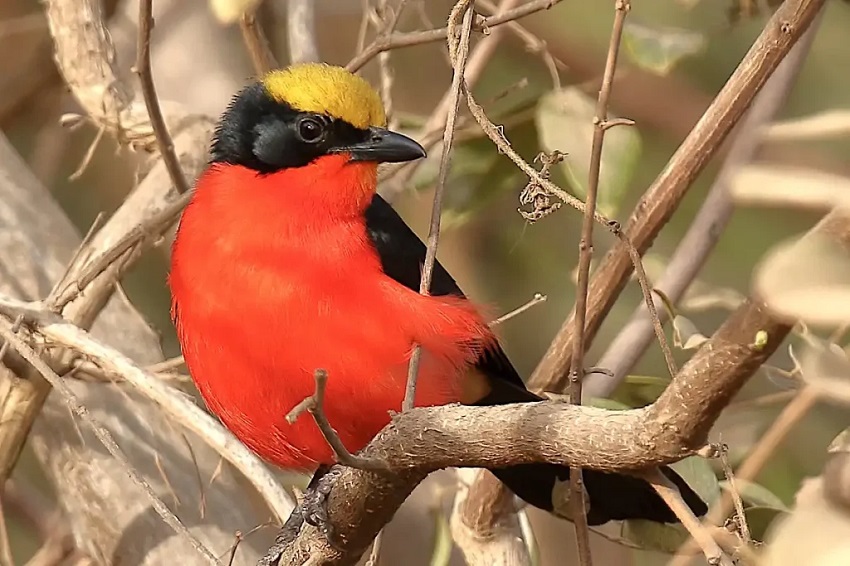
1.6. Rufous-bellied Bulbul
- Kingdom: Animalia
- Phylum: Chordata
- Class: Aves
- Order: Passeriformes
- Family: Alaudidae
- Genus: Alauda
- Species: A. gulgula
This bird has a “crown” of orange-yellow feathers along with black wing feathers. Its beak and irises are yellow. They primarily live in Australia and eat insects, fruits, and berries.
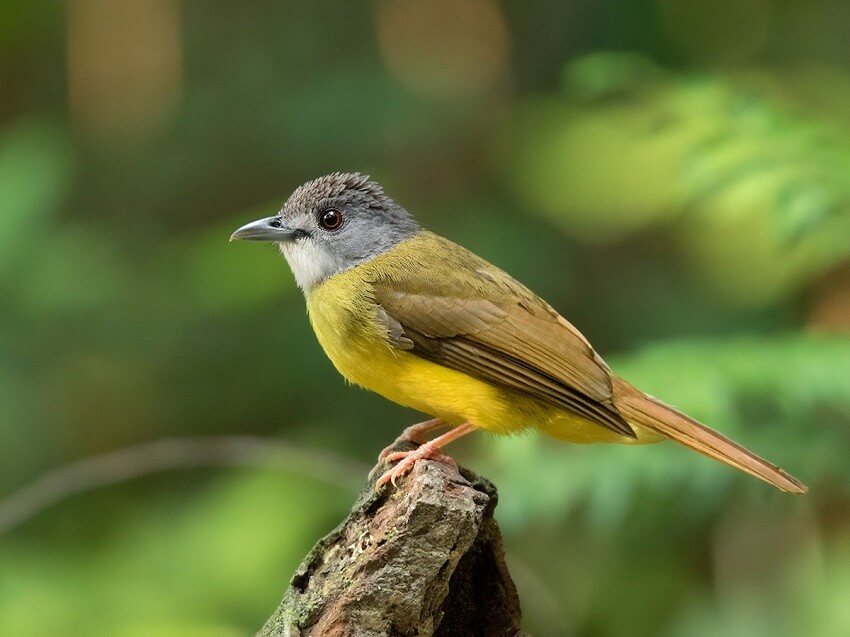
1.7. Red Lory
- Kingdom: Animalia
- Phylum: Chordata
- Class: Aves
- Order: Psittaciformes
- Family: Psittaculidae
- Genus: Eos
- Species: E. bornea
The Red Lory lives on the Moluccas Islands in Indonesia and the surrounding islands.
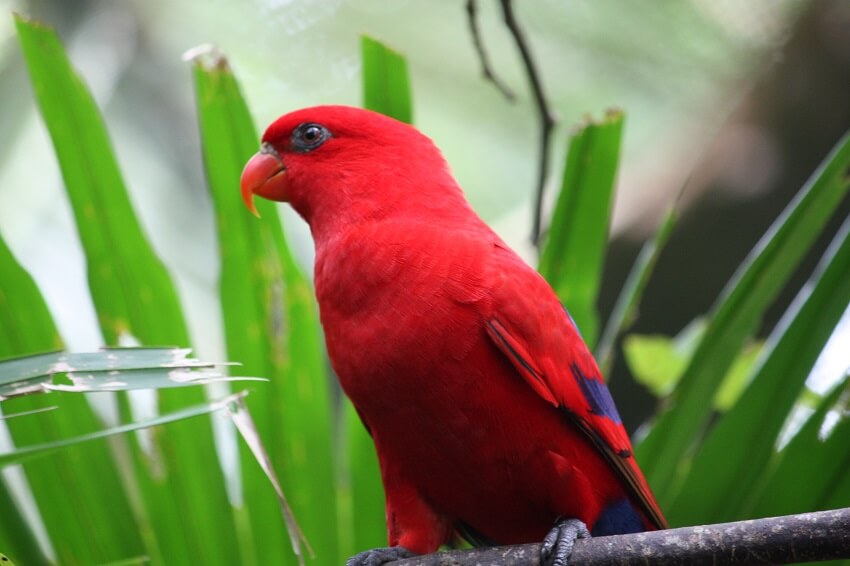
1.8. Fire-breasted Flowerpecker
- Kingdom: Animalia
- Phylum: Chordata
- Class: Aves
- Order: Passeriformes
- Family: Dicaeidae
- Genus: Pachyglossa
- Species: P. melanozantha
The Fire-breasted Flowerpecker lives primarily in the Himalayas, China, and the Malay Peninsula. The bird has an orange-yellow belly, a green back, and a blue tail. They eat insects, spiders, and nectar.
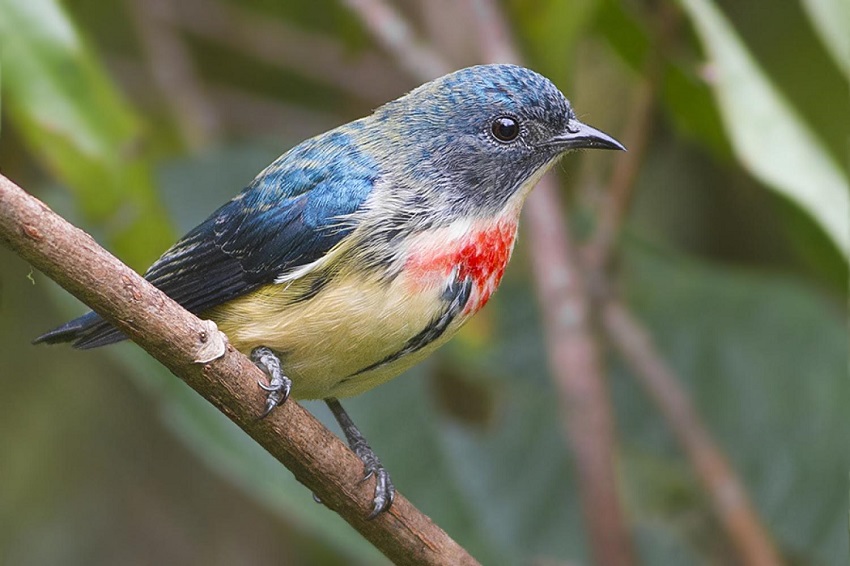
1.9. Black-naped Oriole
- Kingdom: Animalia
- Phylum: Chordata
- Class: Aves
- Order: Passeriformes
- Family: Oriolidae
- Genus: Oriolus
- Species: O. chinensis
The Black-naped Oriole lives in South Asia, on the Nicobar and Andaman Islands. They eat mostly fruits and insects.
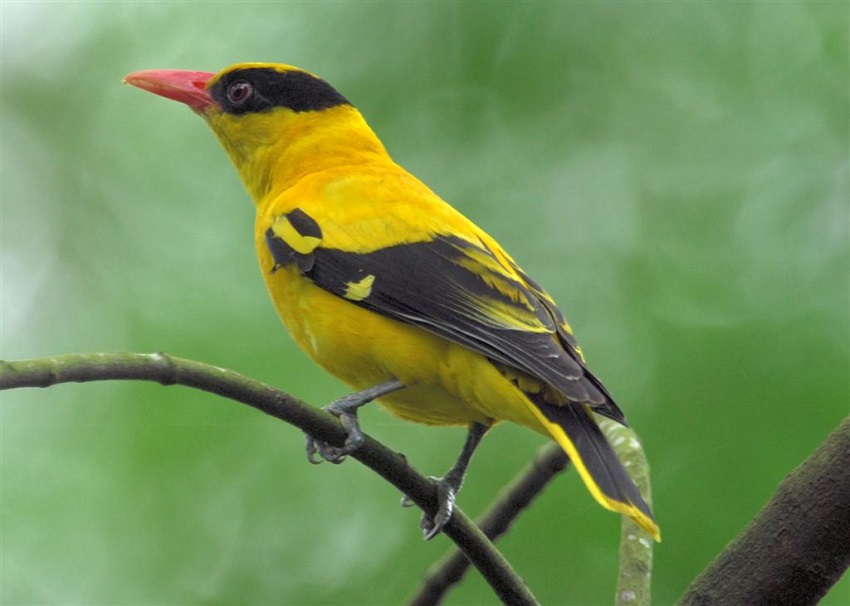
1.10. Masked Trogon
- Kingdom: Animalia
- Phylum: Chordata
- Class: Aves
- Order: Trogoniformes
- Family: Trogonidae
- Genus: Trogon
- Species: T. personatus
The Masked Trogon lives in moist highland forests. The male bird is typically brighter than the female, which has a white ring around its eyes.
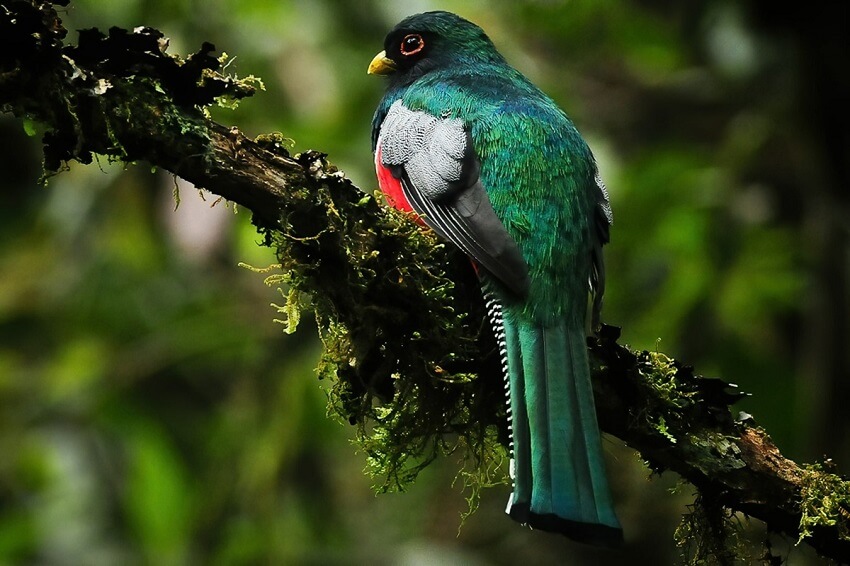
1.11. Keel-billed Toucan
- Kingdom: Animalia
- Phylum: Chordata
- Class: Aves
- Order: Piciformes
- Family: Ramphastidae
- Genus: Ramphastos
- Species: R. sulfuratus
The Keel-billed Toucan (Ramphastos sulfuratus), also known as the rainbow-billed toucan, lives from southern Mexico to northern Colombia and northwestern Venezuela. Its colorful bill is about one-third the length of its 51 cm body.
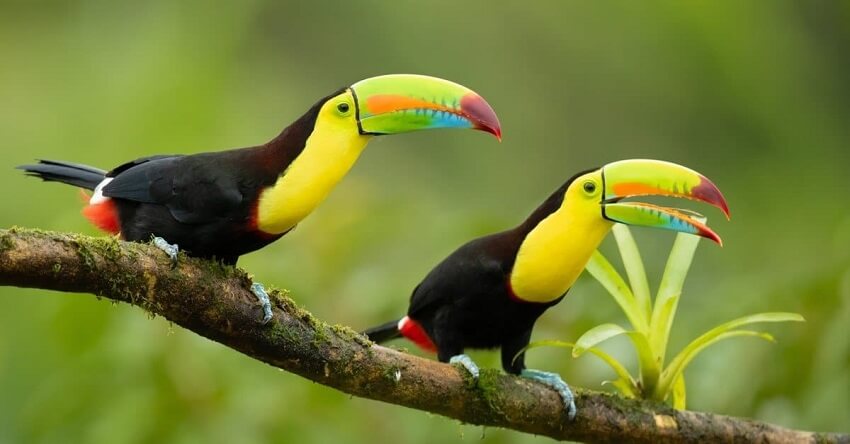
1.12. Splendid Fairywren
- Kingdom: Animalia
- Phylum: Chordata
- Class: Aves
- Order: Passeriformes
- Family: Maluridae
- Genus: Malurus
- Species: M. splendens
The Splendid Fairywren (Malurus splendens) is known for its male’s vibrant cobalt blue plumage, which is used to impress females. It grows up to 13 cm long and lives in dense shrublands or acacia woodlands in Australia.
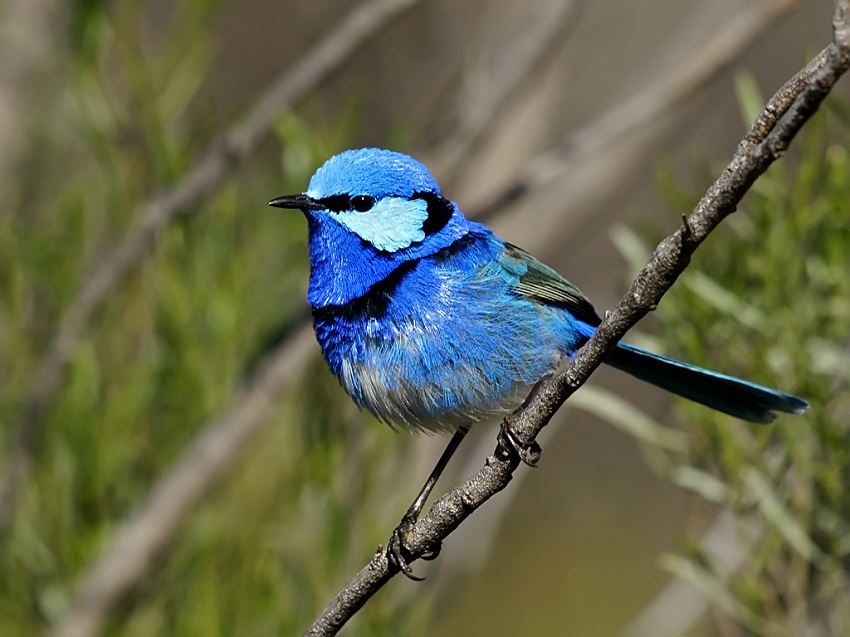
1.13. Fiery-throated Hummingbird
- Kingdom: Animalia
- Phylum: Chordata
- Class: Aves
- Clade: Strisores
- Order: Apodiformes
- Family: Trochilidae
- Subfamily: Trochilinae
- Tribe: Lampornithini
- Genus: Panterpe Cabanis & Heine, 1860
- Species: P. insignis
The Fiery-throated Hummingbird (Panterpe insignis) is often seen in the forested highlands of Costa Rica and western Panama. Its 10 cm body is covered in iridescent feathers that shift from deep orange at the base of the throat to pale yellow and green on the belly and back, and to a sparkling royal blue on the chest and head.
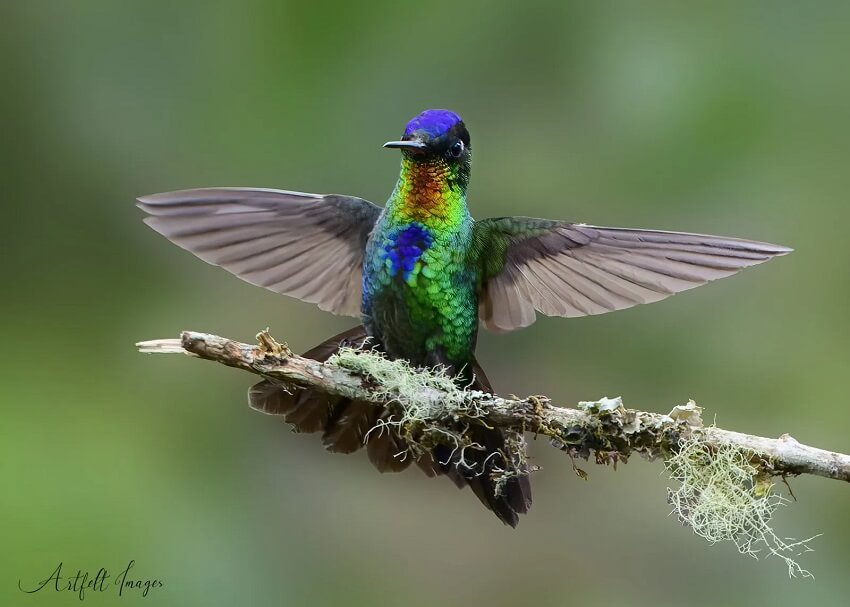
1.14. Indian Peafowl
- Kingdom: Animalia
- Phylum: Chordata
- Class: Aves
- Order: Galliformes
- Family: Phasianidae
- Genus: Pavo
- Species: P. cristatus
The Indian Peafowl (Pavo cristatus) is famous for its shimmering blue plumage and eye-spotted tail that it fans out to attract females. It is native to the Indian subcontinent but has been introduced to many other parts of the world, including North America, Europe, Southern Africa, and Australia.
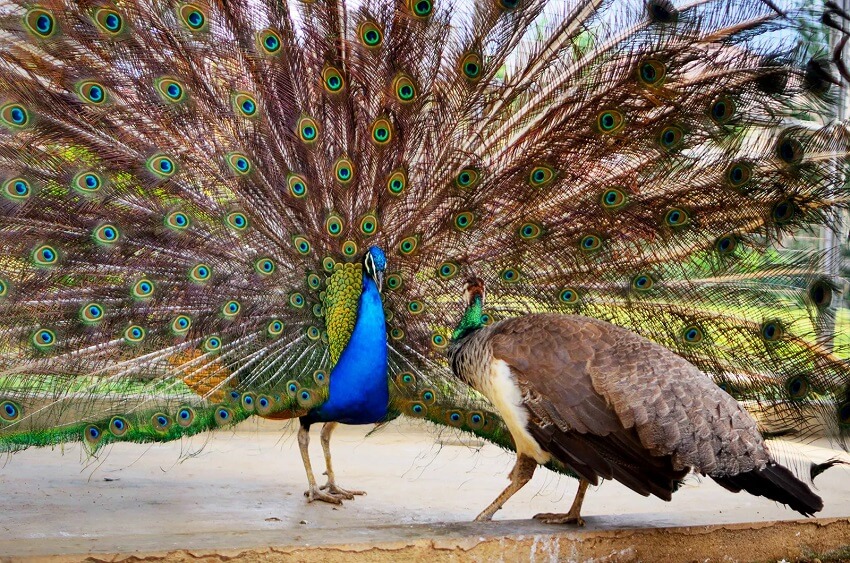
1.15. Lilac-breasted Roller
- Kingdom: Animalia
- Phylum: Chordata
- Class: Aves
- Order: Coraciiformes
- Family: Coraciidae
- Genus: Coracias
- Species: C. caudatus
The Lilac-breasted Roller (Coracias caudatus) stands 37 cm tall. Both males and females have a lilac neck and chest, a turquoise belly, a green head, an orange-red face, and a royal blue tail tip. They live throughout eastern and southern Africa, from Ethiopia and Angola to northern South Africa.
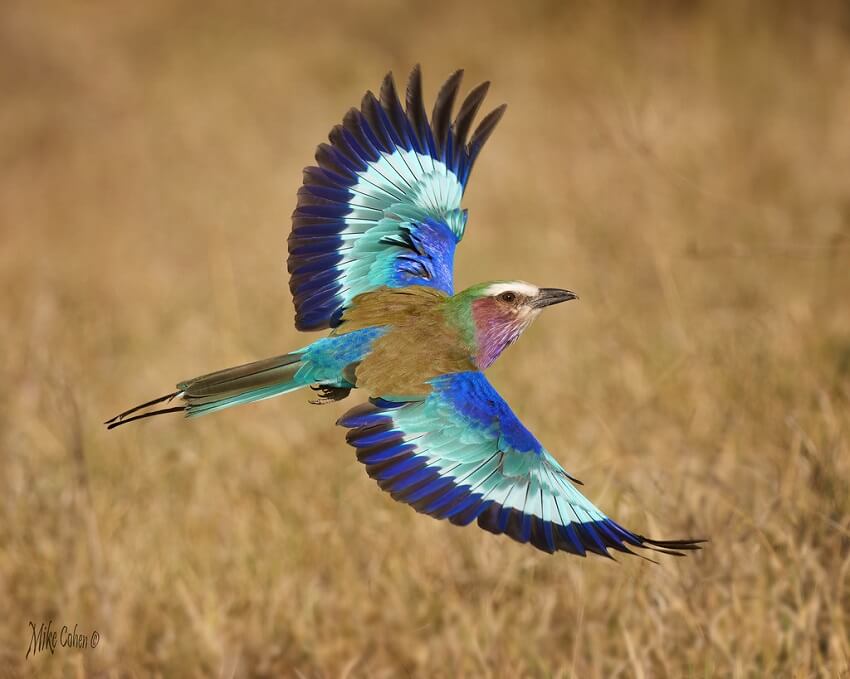
1.16. Wilson’s Bird-of-Paradise
- Kingdom: Animalia
- Phylum: Chordata
- Class: Aves
- Order: Passeriformes
- Family: Paradisaeidae
- Genus: Diphyllodes
- Species: D. respublica
The Wilson’s bird-of-paradise (Diphyllodes respublica) has bright red plumage on its back, a yellow patch on the nape of its neck, and a featherless crown that reveals an electric blue skin underneath. The male Wilson’s bird-of-paradise also has two distinct sickle-shaped tail feathers. When courting, the male spreads its neck feathers to reveal an iridescent green cape.
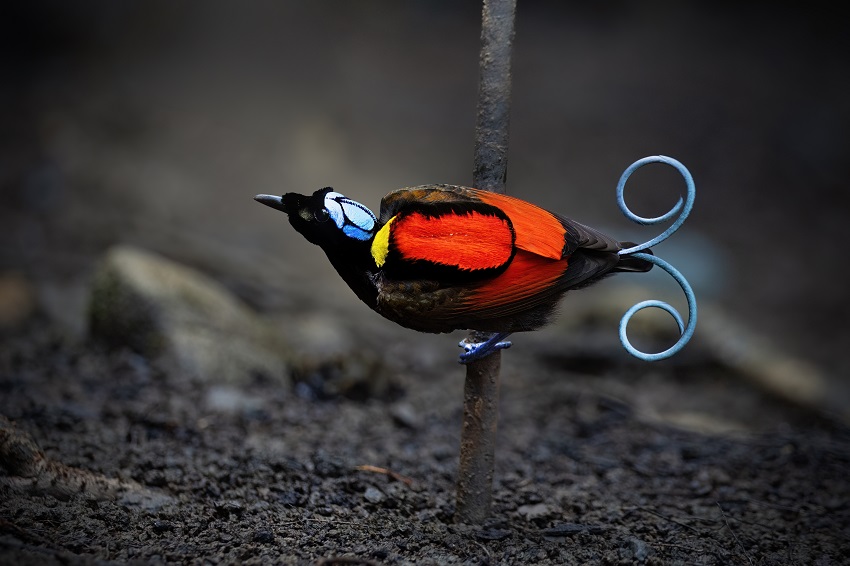
1.17. Resplendent Quetzal
- Kingdom: Animalia
- Phylum: Chordata
- Class: Aves
- Order: Trogoniformes
- Family: Trogonidae
- Genus: Pharomachrus
- Species: P. mocinno
The Resplendent Quetzal (Pharomachrus mocinno), with its turquoise, green, and red plumage, lives in the cloud forests stretching from southern Mexico to western Panama. The male has a yellow-green crest and blue tail feathers that can grow to nearly 1 meter long.
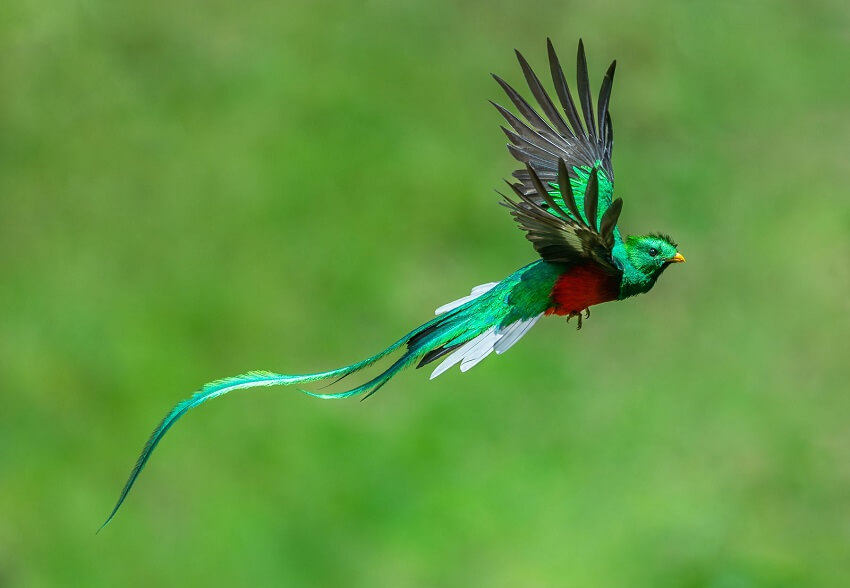
1.18. Spangled Cotinga
- Kingdom: Animalia
- Phylum: Chordata
- Class: Aves
- Order: Passeriformes
- Family: Cotingidae
- Genus: Cotinga
- Species: C. cayana
The Spangled Cotinga (Cotinga cayana) is a tropical bird that lives in the forests and jungles of northern South America, including the Amazon rainforest in Brazil. The male has striking pale blue plumage on its chest and belly, blue-black wings, and a bright red throat. This species measures 18 to 23 cm in length.
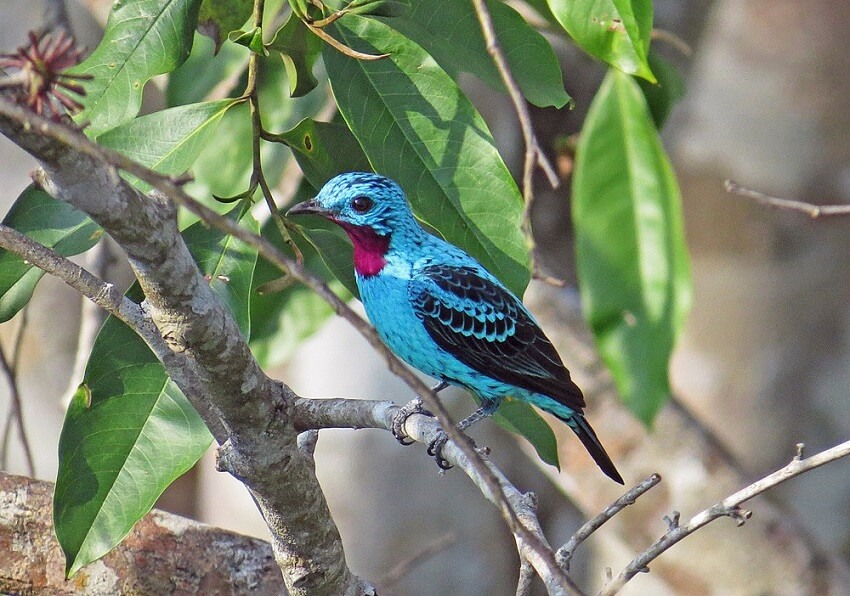
2. FAQs
1. What birds are considered the most colorful in the world?
The Scarlet Macaw and Resplendent Quetzal are often cited as some of the most vibrant birds in the world.
2. Why do bird feathers have so many colors?
Bird colors come from natural pigments and the refraction of light through the feather’s structure, which creates a special iridescent effect.
3. Where do these colorful birds live?
They typically inhabit tropical rainforests in South America, Central America, Asia, and Africa—places with humid climates and high biodiversity.
4. Are colorful birds at risk of extinction?
Some species, like the Quetzal and birds-of-paradise, are facing threats from habitat loss and poaching.
5. Can these vibrant birds be kept as pets?
Some species, such as the Macaw, can be kept under suitable conditions, but many other rare species are protected and cannot be bought or sold.
3. Conclusion
The Most Colorful Birds in the World are not only impressive for their splendid beauty but also hold significant importance in the ecosystem. Observing them helps humans appreciate nature more and become more aware of the need to conserve these rare species, so their colors can continue to shine brightly in the sky.

